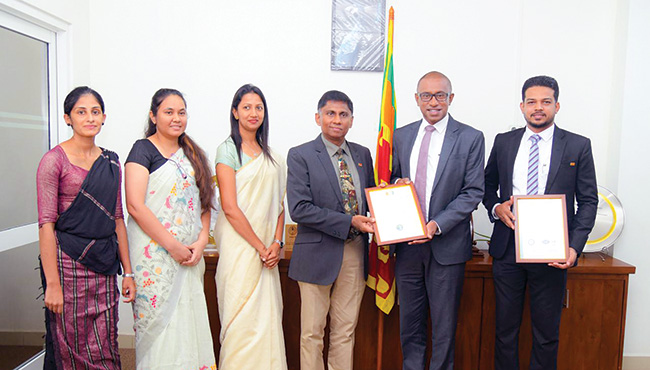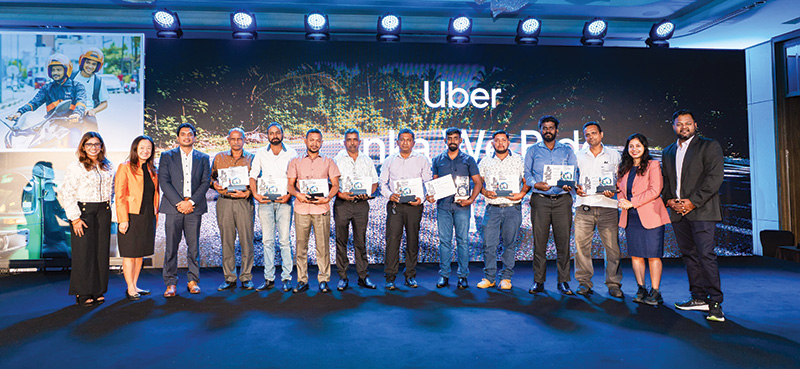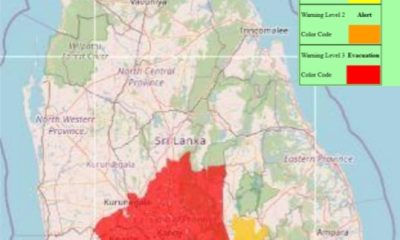Business
NCPI based headline inflation recorded at 70.2% on year-on-year basis in August 2022

Headline inflation, as measured by the year-on-year (Y-o-Y) change in the National Consumer Price Index (NCPI, 2013=100)1 increased to 70.2% in August 2022 from 66.7% in July 2022. This increase in Y-o-Y inflation was mainly driven by the monthly increases of both Food and Non-Food categories. Accordingly, Food inflation (Y-o-Y) increased to 84.6% in August 2022 from 82.5% in July 2022, while Non-Food inflation (Y-o-Y) increased to 57.1% in August 2022 from 52.4% in July 2022.
Monthly change of NCPI recorded at 2.45% in August 2022 due to price increases observed in items of both Food and Non-Food categories which were 0.91% and 1.53%, respectively. Accordingly, within the Food category, increases were observed in prices of fresh fish, eggs, biscuits and fruits. However, prices of dhal, rice and sugar decreased during the month. Further, within the Non-Food category, increases were observed in prices of Housing, Water, Electricity, Gas and Other Fuels (Electricity, Materials for maintenance and Kerosene), Furnishing, Household Equipment and Routine Household Maintenance (Washing soap) and Miscellaneous Goods and Services sub-categories during the month. It is noteworthy that Transport (Petrol, Diesel and Bus fare) sub-category recorded a decline during the month.
Meanwhile, annual average inflation rose to 31.3% in August 2022 from 25.9% in July 2022.The core inflation (Y-o-Y), which reflects the underlying inflation in the economy increased to 60.5% in August 2022 from 57.3% in July 2022, while annual average core inflation increased to 26.0% in August 2022 from 21.3% in July 2022.
Business
Wealth Trust Securities to raise Rs. 500.8 million via IPO

The recent announcement of Wealth Trust Securities Ltd.’s Rs. 500.8 million Initial Public Offering -IPO- comes at a moment when Sri Lanka’s interest-rate environment is gradually easing, allowing well-capitalised primary dealers to expand their trading portfolios and secure long-term positions in government securities.
Company chairman Senaka Weerasooria told journalists in Colombo that the IPO is not merely a capital-raising exercise, but a reinforcement of the disciplined structure that has defined the company since its inception.
He noted that WTS enters the public market with what is already one of the most robust capital bases in the industry, and with “absolute confidence that investors are joining a journey that has consistently returned value.”
Weerasooria said the capital infusion will further solidify WTS’s ability to absorb volatility, particularly amid cyclical movements in Treasury yields.
Despite maintaining a conservative trading outlook, the company has managed to average a 31% ROE over the past twelve years — a figure management repeatedly highlighted as evidence of resilience across both tightening and loosening rate cycles.
Managing Director and CEO Romesh Gomez said that in recent months the direction of policy rates and market liquidity has begun shifting favourably, creating clear value-accretion opportunities for disciplined portfolio expansion. With additional capital, he noted, WTS has greater room to capture advantageous auction positions, broaden secondary market activity and align its investment scale to emerging market windows.
Gomez acknowledged that FY25 reflected compressed performance due to systemic realignment, with revenue at Rs. 4.6 billion and PAT at Rs. 1.2 billion. However, he pointed out that profit sustainability, even through a difficult cycle, speaks to strong operational controls. The A- rating with a Positive outlook continues to stand, reinforcing the company’s position as a stable counterparty in a specialised sector.
Asia Securities Advisors, managing the IPO, pointed out that the offer price of Rs. 7 presents meaningful upside when benchmarked against underlying valuation metrics. The move into the listed environment, they noted, enhances governance visibility — a point increasingly valued among institutional investors participating in the Government securities market.
By Ifham Nizam
Business
BoardPAC achieves Carbon Neutral Certification for the fourth consecutive year

BoardPAC, the global leader in digital board meeting automation, has secured the Carbon Neutral Certification for 2024, marking the fourth consecutive year the company has achieved this milestone. The certification, awarded by the Sri Lanka Climate Fund (SLCF) under the Ministry of Environment in October 2025, underscores BoardPAC’s commitment to environmental sustainability and responsible corporate governance.
BoardPAC’s operations, spanning over 40 countries, were assessed against the ISO 14064 – 1:2018 standard, and the company’s organization-level Greenhouse Gas (GHG) emissions were successfully offset, reflecting its ongoing commitment to reducing its environmental impact.
Business
Uber marks 10 years in Sri Lanka: Moving People, Powering Livelihoods, Impacting Communities

Uber today marked ten years of operations in Sri Lanka, a decade in which the platform has reshaped how people commute, and how thousands of Sri Lankans earn a livelihood. Over the past decade, ride-hailing has become one of the most transformative shifts in Sri Lanka’s urban mobility landscape, providing safe, reliable and affordable transport at scale.
Chathuranga Abeysinghe, Deputy Minister for Entrepreneurship, Ministry of Industries and Entrepreneurship Development, Government of Sri Lanka, graced the milestone event as the Chief Guest. U.S. Ambassador Julie Chung attended as the Guest of Honor, joined by Akanksha Singh, Head – South Asia Markets, Uber, and Kaushalya Gunaratne, Country Manager – Mobility, Uber Sri Lanka.
As per the 2024 Sri Lanka Economic Impact Report, compiled by global policy research firm – Public First, Uber and Uber Eats together generated over LKR 160 billion in economic activity in Sri Lanka within a single year. Since its entry in Sri Lanka in 2015, Uber rides have covered over 1.15 billion kilometers – equivalent to nearly 3000 trips from Earth to the moon! Over 320,000 Sri Lankans have earned through the platform as drivers.
Uber has also supported the tourism ecosystem, enabling more than 700,000 airport trips, connecting visitors seamlessly to their destinations. Over the last year, we’ve further intensified our service in the Western and Central provinces and expanded our offerings in the Southern and Northern provinces – bringing its services closer to more communities across the country. Uber has emerged as one of the most preferred ride-hailing platforms across the island, offering affordable, reliable, and safer rides at different price points.
Deputy Minister for Entrepreneurship, Ministry of Industries and Entrepreneurship Development, Government of Sri Lanka, Chathuranga Abeysinghe, said, “Over the past decade, Uber has become part of the fabric of daily life in Sri Lanka – not only by helping people get where they need to go, but by enabling thousands to earn an income with dignity and flexibility.
-

 News3 days ago
News3 days agoOver 35,000 drug offenders nabbed in 36 days
-

 News7 days ago
News7 days agoLevel III landslide early warning continue to be in force in the districts of Kandy, Kegalle, Kurunegala and Matale
-

 Business5 days ago
Business5 days agoLOLC Finance Factoring powers business growth
-

 News5 days ago
News5 days agoCPC delegation meets JVP for talks on disaster response
-

 News2 days ago
News2 days agoCyclone Ditwah leaves Sri Lanka’s biodiversity in ruins: Top scientist warns of unseen ecological disaster
-

 News5 days ago
News5 days agoA 6th Year Accolade: The Eternal Opulence of My Fair Lady
-

 News3 days ago
News3 days agoRising water level in Malwathu Oya triggers alert in Thanthirimale
-

 Features4 days ago
Features4 days agoThe Catastrophic Impact of Tropical Cyclone Ditwah on Sri Lanka:















